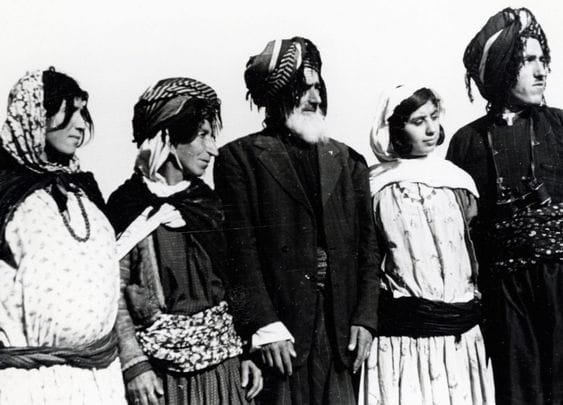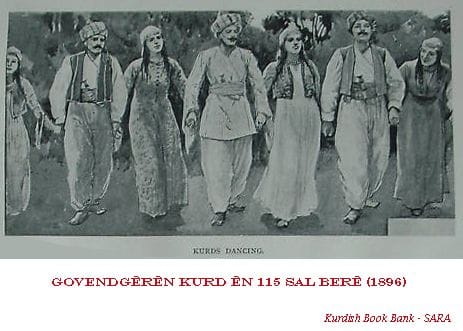In Kurdish dance, Sarchopi has a significant meaning, it shows Kurds' happiness. The way the dancers stamp their feet on the ground in this dance indicates their love for their land and the philosophy of girls and boys taking each other's hands is a sign of men's and women's equality.
Girls and boys holding hand: Kurdish nation shows women and men's equality through their dance. Women have always had a great place in Kurdish society and family from ancient times and the Kurdish mind and culture have always considered a special place for women's rights which is clearly shown in Kurdish dance. In fact, men and women holding hands during dancing reveal a particular reason.
Crying and shouting: This shouting is quite meaningful in Kurdish dance. It is known that Kurdish warriors held one another's hand during the fighting and attacked the enemies by shouting out loud which made the enemies feel scared. Nowadays, this form of shouting still remains in Kurdish dance.

Sarchopi and Binshopi: It is said that Sarchopi in Kurdish dance plays the role of a commander as if a group of soldiers is under their command; s/he makes them coordinate them and does not let anyone scatter the group. Some of the Kurdish dance experts say that Sarchopi and Binchopi have some other philosophy which is the equality of every group because in Kurdish dance there is no central group or person to act as the head of the group and every member is equal to the others.
As we mentioned before, Kurdish dance is very meaningful; each kind of dance has a special reason behind it, for example "Arabana" dance. Arabana dance history goes back to the time when the Arabs attacked Kurds to force them to accept Islam; in a poem about that event, it is mentioned clearly that: "Attack the Arabs, Attack the Arabs, spill their blood and try to force them to leave the land". This is why the Arabs invaded the Kurds and the Kurds won the war. As it is seen in the dance, the dancers step forward three times which shows the Kurds' success in stepping forward while fighting the Arabs, and one step backward which does not mean they were defeated but rather for hiding themselves behind their fortresses so that the enemy would not spot them.

The philosophy of the "Jandrma" dance began from the time when the Ottomans invaded the Kurds. It is known that the Ottomans and the Kurds had negotiated and the Ottomans promised not to attack the Kurds but they broke their promise and invaded Kurdistan.
In an interview with Shahram Hamidzadeh, an expert on Kurdish dance, I asked him a question about this subject and he replied: "Jandrma dance is also called "Albak" dance, too that originated from Agri and Makou cities; at the time when the Ottomans attacked Kurdistan, a group of soldiers who were serving in the Turkish military were called Jandrma. When Jandrma invaded Kurdistan and began to dominate Kurdish homes and plunder them, the Aghas and the chief of the clans stopped them and talked to them in Turkish: "Jandrma promises not to kill my people". The Jandram did not promise anything and said: This is our land and you cannot do anything about it. The Agha and chiefs told their people that now cruelty and plundering had reached their peak so we are forced to defend our land. The people sang a song and said: "Jandrma's clothes are blue, their hats are red and clean", this was a code for killing anyone who was wearing such uniforms and preventing them from plundering our lands. Jandrma dance history goes back to that time."








